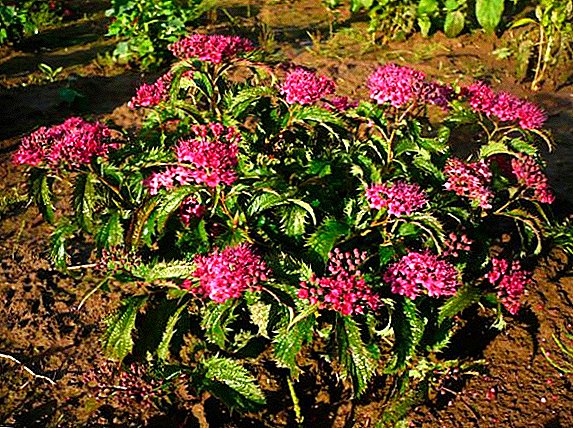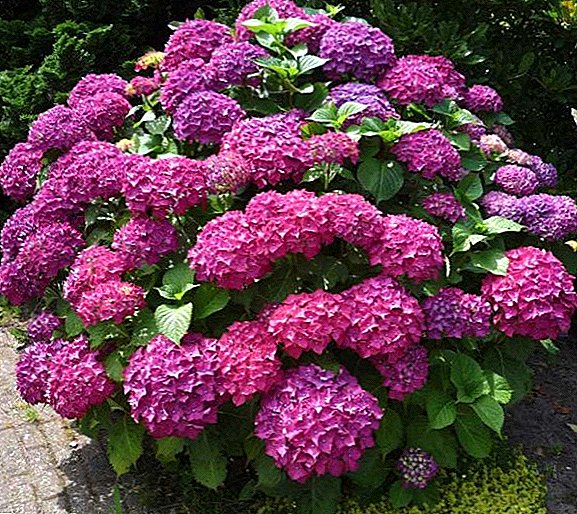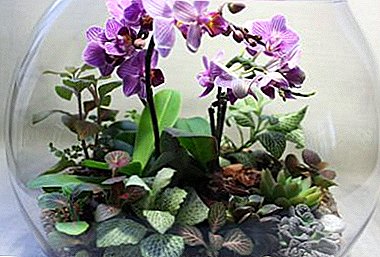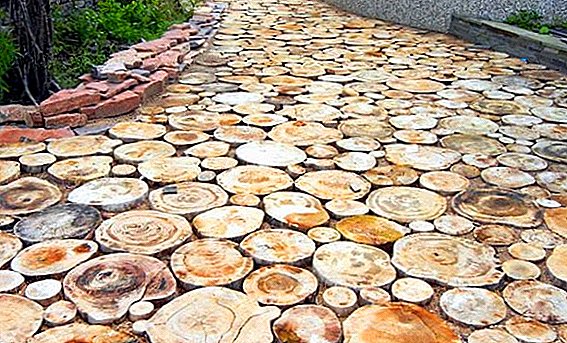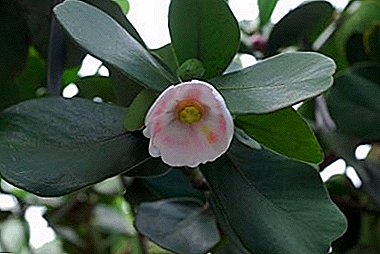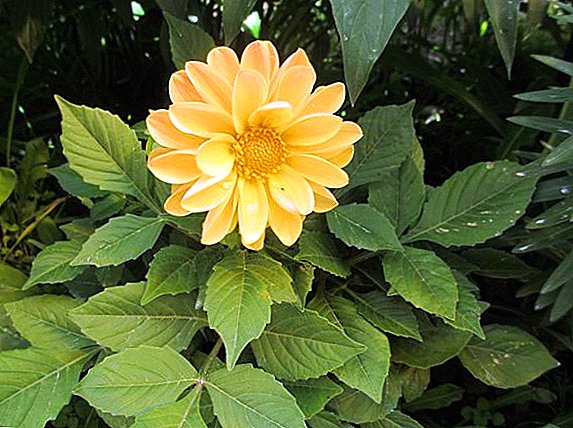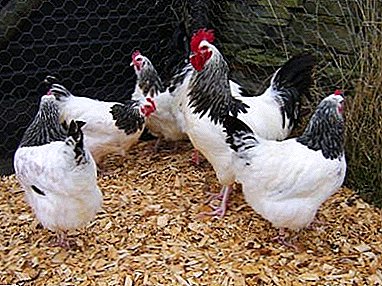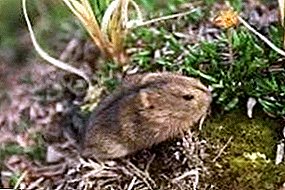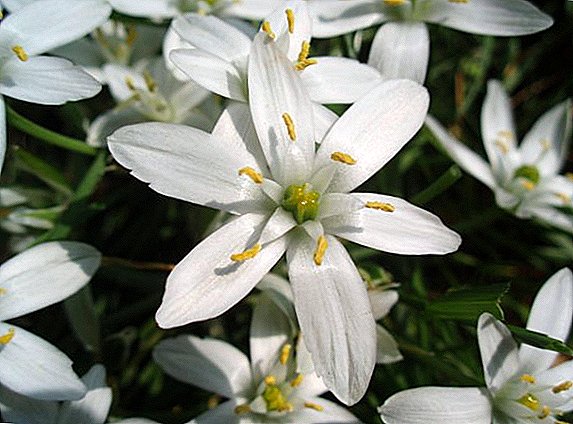What is Indian onion
 Indian onion plant (in Latin, Ornithogalum caudatum, other Russian names are the tail-tailed bird, Chinese onion, spicy bow, Mongolian bow, false halibut, hell root, and also branka) - it is a perennial of the family Lileins, growing mostly in South Africa, in addition, in India, China, in the central and southeastern parts of the European continent, in particular, in the Mediterranean region.
Indian onion plant (in Latin, Ornithogalum caudatum, other Russian names are the tail-tailed bird, Chinese onion, spicy bow, Mongolian bow, false halibut, hell root, and also branka) - it is a perennial of the family Lileins, growing mostly in South Africa, in addition, in India, China, in the central and southeastern parts of the European continent, in particular, in the Mediterranean region.
Did you know? The Latin name of Indian onion literally reflects the Russian version of "poultry-bird". It comes from the Greek "ornis", that is, "bird", and "gala", that is, "milk". In our understanding, "bird's milk" is associated with something unreal, existing only in fantasy (as "chimera", but with a positive shade). Perhaps Indian onion got its name because of the amazing beauty of flowers, predominantly white. For example, in German, the plant is called "milchsterne", that is, "milk stars", the English version is "stars of Bethlehem", ("Bethlehem stars"). However, it is possible that the case is also in milk juice, which is distinguished by the leaves of Indian onions, because, say, in Hebrew, the name of the plant sounds like "nets-halav arawi", that is, "hawk's milk".On the territory of the USSR, the poultry lamb began to breed mainly as a greenhouse plant from the second half of the last century.
Externally, the plant looks like a familiar onion, but the bulb itself is not white, but green, and the husk covering the bulb is not golden, but light brown, almost white. Such an onion lives much longer than its bulb counterpart - up to three decades. The leaves look rather inconspicuous, do not stand directly, fold and dry at the ends, which, however, does not prevent them from continuing to grow, sometimes reaching a meter in length and 5 cm in width. 
But if you see what Indian onions look like during flowering, you will definitely want to have a similar decoration on your own window sill. Lush inflorescences, slightly resembling a hyacinth in shape, consisting of numerous white or green with a white border of small delicate flowers in the shape of stars, gradually opening upwards, look truly fabulous and turn a rather dull looking plant into a real celebration of the soul!
And if you take into account that such a treasure also has many useful properties (Indian onions have long been successfully used in traditional medicine), then they will want to grow it at home even more.
Features of growing Indian onions at home
Indian onions are not demanding to care, and its cultivation presents no particular difficulties if you know and follow certain rules.
The soil
Growing Indian onions as a houseplant is best in the substrate consisting of sand, sheet soil and humus (the first two components are mixed in equal parts, after which the same amount of humus is added to the mixture). You can replace the humus with a soddy soil, but in this case you need to take a little more sand. 
In order for the bird to grow better and please you with its flowering, in addition to the correct soil, it is also important not to be mistaken with the choice of the pot. Like most bulbous indoor plants, plant Indian onion is better for one bulb in a small pot, since the excess space will slow down the growth of the poultry lamb.
Preference should be given to pottery, it has a number of advantages over plastic, and with respect to Indian onions it is quite important. Not to mention that such a pot looks much more solid, it will not turn over as the plant leaves are pulled out and it does not crack if the bulb grows too much.
Clay does not trap excess moisture and has the ability to clean the soil from salts and other sediments that enter it along with watering (if you paid attention to the peculiar white bloom formed over time along the edges of clay flower pots, then it is just “stretched” from the ground harmful substances that in plastic pots just accumulate in the soil).
Before planting on the bottom of the pot, you need to lay out the drainage (for example, fine expanded clay), then pour the prepared soil mixture and carefully dip the onion in it so that its upper part remains outside. 
Important! Never screw a bulb into the ground, it damages the root buds and can destroy the plant!As mentioned above, Indian onions are a real survivor. Therefore, it should be borne in mind that the bulb you have planted will grow, and in the end, the originally picked pot will become cramped for it. It is the size of the bulb that determines the moment of transplanting Indian onions, but this procedure is best done in the fall.
In order for Indian onions to grow better, one should not allow the soil in a pot to turn into a solid stone. The root system of the plant needs air, so the top layer of the earth should be regularly loosened.
Lighting
Indian onion is a sun-loving plant, for normal development it needs bright illumination, therefore in a city apartment it is better to choose southern, western or eastern windows for a flowerpot. In darker places (on the north side or away from the window sill) Indian onions grow worse.
Therefore, if you do not have free space on a well-lit window (or there are no such windows at all), you will have to try to fill the plant's need for light by organizing "sun baths" for it. At least a week during the month the Indian onion should be located on a sunny plot, and if you need to carry the flower to the "overexposure" to the neighbors, then it may be worth it. 
In the summertime, it is perfectly acceptable to take out Indian onions on an open balcony or to plant in a country house, but care must be taken that the scorching July sun does not fall on the plant, otherwise it may get burned.
Temperature
Indian onions grow well at room temperature. With African roots, this plant tolerates heat much better than cold. If in winter the temperature in the room drops below 12 degrees Celsius, this may be critical for the poultry lamb.
Watering
Indian onions will forgive you if you forget to water it, but the plant reacts very badly to an excess of moisture in the soil. Therefore, you need to focus on the state of the soil in the pot: do not water the plant until the earth has dried.
If you water the plant with water from the aqueduct, first, be sure to let it settle well in an open vessel: firstly, this procedure will allow the chlorine harmful to flowers to evaporate; secondly, it is better for the plant that the water is not too cold - ideally the same temperature as the soil in the pot.
But the birdworm is very demanding of air humidity. If the room is dry, the Indian onions begin to turn yellow leaves, in addition, the plant becomes very vulnerable to various diseases. 
That is why spraying is an important point in caring for poultry. It is especially important to do it in summer, when it is hot, and also in winter, if the room is very hot.
Important! You can not spray the plant on a sunny day, it is better to carry out shower procedures in the early morning. Drops of water should not remain on the leaves at the moment when the sun's rays are directed at them!No less than in water, Indian onions need oxygen. For air access to the roots, as has been said, it is necessary to loosen the ground regularly, and it is necessary to remove dust from the leaves of the plant, this will ensure proper gas exchange and the photosynthesis process will be faster.
Top dressing
Even properly selected for Indian onions, the soil after a couple of months loses the necessary nutrients for the plant and is depleted, so flower care, especially at home, when the bulb is in a close pot with a limited amount of soil, includes mandatory fertilizing with mineral and organic fertilizers.
For these purposes, you can purchase complex preparations in a specialized shop and use them in accordance with the instructions. But if there is no such drug on hand, the plant’s need for nutrients necessary for it can help. a weak solution of potassium permanganate. 
The second option is a good mineral fertilizer prepared "from improvised means" - common wood ash infused with water. It is undesirable to use the ashes obtained from burning trees (branches, branches), which grew in highly polluted industrial areas. You should also give preference to young deciduous trees, in this ash more potassium is needed for indoor plants.
Important! When feeding poultry, you should always remember that its development has certain natural phases. For normal growth, Indian onions, like any other plant, need a period of rest when it cannot be fertilized and actively watered. Top dressing should be done only when the Indian onion grows or blooms.
Breeding methods of Indian onions
There are three ways of breeding Indian onions: seed, bulbous children and division of the bulb itself.
As with any bulbous plant, for Indian onions the simplest is breeding bulbous kids. After flowering, several onions (sometimes even up to two dozen) of small bulbs are formed on one bulb. Gradually, they grow up and eventually separate themselves from the mother tuber, tearing its skin. 
You can carefully separate them and plant them in a moist soil, where they will root quickly, or you can wait for each “cub” to take root in the mother pot, and only then carefully remove it and transplant it into a separate pot.
Seed propagation method It is also quite common (by the way, for the first time Indian onions were first introduced to the Soviet Union in the form of seeds). But there is a nuance: the seeds can be formed only from the pollinated plant, and when grown indoors, it does not pollinate by itself.
If you do not grow Indian onions in the open field and do not take it out in the summer to the balcony, where insects can access it, you can carry out the pollination procedure yourself, gently touching the plant over one year with a small brush to all the flowers. 
After complete drying of the seed box, you can collect the seeds and sow them in fertile soil. In this way, much more small onion can be obtained than with the first method of reproduction, besides the seeds of Indian onion sprout beautifully. After they grow up a little, we arrange each in a separate pot - and the new generation is ready.
If the seeds could not be obtained, and the young onions are not formed by the plant, you can simply split an adult bulb in half, thus obtaining two separate plants. 
Features of the cultivation of Indian onions in the open field
Indian onions can be planted in their own country, but the cultivation of this plant in the open field has its own characteristics.
As mentioned above, the poultry does not survive at low temperatures, but even if the temperature in your region does not fall below 10 degrees in winter, the plant may not survive the cold anyway.
Therefore, there is only one option here: in the spring we land, in the autumn we move to heat. Indian onion tolerates transplantation quite easily, so that no special problems will arise.
It is best to plant Indian onions at the end of spring, when night frosts on the ground are completely excluded.  The place for the plant is determined on the basis of its requirements for lighting (however, in the open field, Indian onions can be planted in the shade of trees or other perennials). The land does not have to be very fertile, but the plant does not like too acidic soil and certainly will not grow in a wetland. Next - moderate watering and, in fact, everything.
The place for the plant is determined on the basis of its requirements for lighting (however, in the open field, Indian onions can be planted in the shade of trees or other perennials). The land does not have to be very fertile, but the plant does not like too acidic soil and certainly will not grow in a wetland. Next - moderate watering and, in fact, everything.
In the autumn we dig the plant, transplant it into a pot and bring it into the room. Here two options are possible: to grow it in winter as a usual house plant (the rules of care are set forth above) or to arrange wintering for it in the resting phase.
In the first version, we put the pot with a flower on the windowsill and water it as described above.
In the second case, we place the plant away from direct light and do not water at all (only occasionally it is necessary to spray the soil in a pot). We resume watering after a new landing in open ground, while the very first watering of Indian onions will be perceived as a waking command and will resume active growth.
Transplanting Indian onions in the open ground for the summer has several advantages. 
Firstly, the plant can be much less fed up: having a sufficiently strong and deep root system, the poultry can take everything needed from the ground (however, the plant will be very grateful if once a month to feed it with a mullein).
Secondly, the plant gets the opportunity to pollinate in a natural way, with the result that it reproduces much better. Indian onion grows in the open field is also very fast, children form much more (they say that their number reaches almost a thousand, although this is hardly true), flowering is also longer and more abundant.
The only precaution to keep in mind is: It is necessary to replant Indian onions in the fall very carefully, in order not to damage the root system, which in the open field can go up to a meter deep into the soil.
Medicinal properties and contraindications
As already mentioned, Indian onions have numerous healing properties.
This plant has a property remove pain, heal wounds, improve blood flow, kill disease-causing bacteria. The benefit of Indian onions has long been noticed by Siberian healers who treated osteochondrosis and catarrhal diseases with this plant. 
Did you know? It is believed that the Indian onion remembers the pain that was caused to its flowers, therefore, every time before picking up such a flower, it is necessary to ask for forgiveness from him. The rest of the plant is considered very positive in terms of energy, its presence in the house promises career growth, activity, good mood and financial well-being. Especially good birdworm affects the mood of children.
It is possible to doubt about positive energy, but the Indian onion is definitely beneficial because of its phytoncidal properties. The plant is able to significantly clean the room from the pathogenic bacteria in it. Indian onions have even found use in pharmacology, in particular, it is used to produce drugs for respiratory diseases of the throat and respiratory tract. Such drugs are highly effective primarily due to their very fast action.
However, Indian onions are much more widely used in traditional medicine. Juice, squeezed from fresh leaves, prepare water or alcohol tinctures used for healing wounds and bruises, as well as pain in the joints, headaches and many other diseases. As well as aloe juice, Indian onion juice is used for rubbing and compresses: it is rubbed or applied to a sore spot (temples, nose, nape, lymph nodes - depending on the disease). The effect comes in a quarter of an hour. 
Important! Indian onions can not be taken inside! The plant is poisonous and very dangerous when exposed to mucous membranes. If the juice of Indian onions got in the eyes, they should be immediately washed with plenty of water, dripped with two drops of Tauphon, closed and not opened for ten minutes.Like any potent medicinal plant, Indian onion has a number of other contraindications. So, individual intolerance and a strong allergic reaction to the juice of Indian onions are possible. As a rule, it manifests itself in the form of skin rashes, redness, burning sensation or itching, as well as swelling.
In order to avoid burns, you must wear protective gloves with Indian onions. For medicinal purposes, the juice should be applied only to well-cleansed skin.
Hemophilia cannot be used with Indian onions.
So, Indian onion is a very beautiful (in bloom) and unusually useful plant. Grow it easy enough. However, before using it in your home first aid kit, you must first consult your doctor and conduct a test reaction to the presence of allergies.


